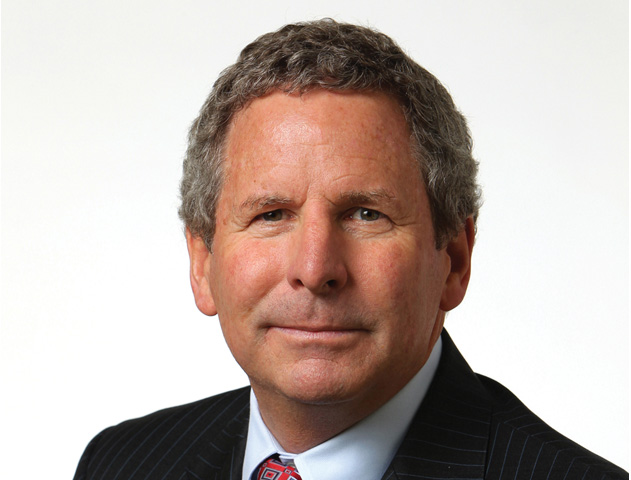 Chichester: “Should the tenuous balance of global markets be thrown by a significant decline of foreign economies, the macroeconomic consequences could quickly override the relative benefits.”
Chichester: “Should the tenuous balance of global markets be thrown by a significant decline of foreign economies, the macroeconomic consequences could quickly override the relative benefits.”
This is a guest column from Rick Chichester, president and CEO Faris Lee Investments, for RECon 2016.
There has been much speculation recently about where we are in the cycle for commercial real estate. We are living in interesting economic times, making it difficult to compare this cycle to past cycles. Contrary to the thinking that history will repeat itself, in my opinion, taking a retrospective approach isn’t the best way to set CRE investment strategy going forward. There are three main reasons for this:
- The US bond market. A 30-year bond bull market has taken the 10-year T-bill from 15% to 2% and less. Investment decisions of the past have benefitted from the long term rate decline and, as such, the commensurate favorable options available in capital markets. But this 30 year decline has little to no room to compress further and there is a much greater possibility that rates will increase than decrease, and capitalization rates will be influenced to track a similar path. So now we have to ask ourselves how we reconcile past, present and future strategy with an economic and financial environment that is going another direction.
- Lack of construction: Compared to past cycles where confidence has led to a tremendous amount of new construction (often times over-building) we are seeing very little new construction from the commercial real estate industry as a whole and this is also true for the retail sector. This fact is favorable if the economy continues in a healthy direction and businesses continue to fill vacancies in existing construction. However, consider the fact that the U.S. has 35.5 sq. ft. of retail per capita, compared to an average of 5.5 sq. ft. in other G7 nations and less than 1 sq. ft. in emerging markets and developing nations. While it’s unlikely that our consumer-driven country is going to 5.5 sq. ft. per capita, it’s also unlikely we’ll stay at the 35.5 sq. ft. that resulted from the mall frenzy of the 80s and the construction boom of the last expansion. How we choose to repurpose that excess space will be critical to the retail sector and to commercial real estate as a whole.
- We are more globally interdependent than ever before: Commercial real estate investments can tolerate and even be buoyed by a certain degree of turbulence in global markets that drives foreign investment capital to shelter in the US. In recent years this international demand has contributed substantially to historically high pricing and low cap rates. But the spoils of this flight to safety are only a moment in time on a very dynamic and fluid continuum. Should the tenuous balance of global markets be thrown by a significant decline of foreign economies, the macroeconomic consequences could quickly override the relative benefits. As well, the economic challenges of Asia, Russia, Venezuela, Brazil, the emerging markets, etc. can easily cause a global recession, inclusive of the US, if not managed carefully.
Considering these points, it is more important than ever to be disciplined in your CRE strategy whether you are buying, selling or holding. Buyers looking for yield and a hedge against rising cap rates and interest rates might seek value-add investments where lease-up, repurposing, repositioning, or changing the tenant mix could sustainably increase functionality and NOI. Sellers, considering when to sell, should underwrite and plan to position their assets to go to market by no later than early to mid-2017, otherwise be exposed to market risk, interest risk, and cap rate risk. Cap rates are still compressed, but we are seeing more inventory that stays on the market longer, which is historically a good indicator that the market is entering a period of dislocation. As this occurs, there will be pressure for cap rates to rise. If you’re not a seller, refinance, if opportunistic, before the next Fed rate increase and be prepared to hold for 5 to 7 years. In your scenario planning, test your property’s financial tolerance for a 20% drop in income and how it would impact cash flow.
With the understanding that no two investors or investments are alike, Faris Lee has been advising its clients based on what we see as a “new frontier” investment environment. We maintain that a well-managed and strategically selected commercial real estate portfolio remains one of the best places to invest, but with an elevated degree of consideration for numerous unique factors: the investors, their risk tolerance, all facets of the assets under consideration, and the current and projected macro and micro market fluctuations that will influence a portfolio over time.
Rick Chichester is president and CEO of Faris Lee Investments. The views expressed here are the author’s own.

















 Copyright © 2024 ALM Global, LLC. All Rights Reserved.
Copyright © 2024 ALM Global, LLC. All Rights Reserved.